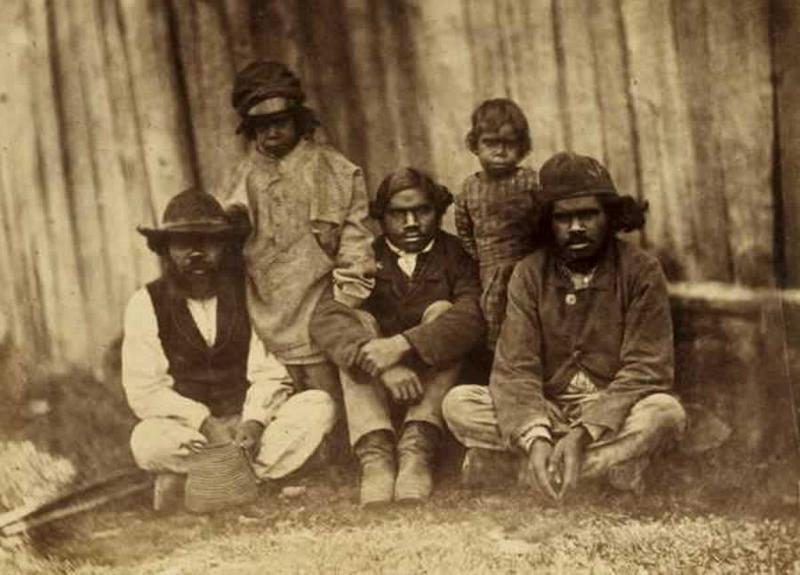Australia – From Aboriginals To Crocodiles
By | July 10, 2019
Aboriginal farmers - Franklinford 1858. Source: (commons.wikimedia.org)
Australia is a unique country with some interesting details in its history. There is more to appreciate besides just that Australian accent and the crocodile movies that were made there.
Australia began with the Aboriginals who were the first settlers in Australia. There are still Aboriginals who live in the Outback today as well as other areas of Australia. Many different clans of Aboriginals make up the area with their own language and territory. The Aboriginals feel as if they are part of the land itself. Their “land” was invaded around the time of the late 18th century. Because they were so familiar with the land, they knew how to find water, how to get plants to grow, and how to hunt. Much like the Indians in America, their land was taken from them or destroyed. They have had to work as laborers for those who have taken over their land such as cattle ranches.
Digeridoo. Source: (commons.wikimedia.org)
A very unique wind instrument was developed by the Aboriginals in Northern Australia about 1,500 years ago called a Digeridoo. This instrument is still in use by them today.
Outback. Source: (Wikipedia)
The Outback is a huge area within Central Australia. This inland area of Australia is sparsely populated. Most of the inhabitants are located close to the coastline on the Eastern half of the country with a few on the Western half. Despite the vast amount of land in Australia, it is grossly underpopulated due to the hot dry desert land located in Central Australia. It is considered to be the driest continent in the world except for Antarctica.
Edward Roper – Gold Rush (Ararat 1854). Source: (Wikipedia.org)
Gold was discovered in Australia in 1851 in the area known as Victoria. The rush for gold was on as soon as news of this gold spread. Thousands flocked to the area from both South and West Australia with the news even reaching Britain. A total of 30,000 migrants had flocked to Victoria by the end of the year. People from many ethnic backgrounds were represented including Italians, Hungarians, Germans, Chinese, and Americans. More gold was discovered in Maldon and Stawell in 1853. Because of the increase of the population coming into the country, there was an increase in diseases causing many people to die. Before the gold rush, Melbourne was just a dirty dangerous place, but after the gold rush years 1851-1854, it became a wealthy capital. The gold resulted in one-third of the world’s gold output during that decade. All of the diggings, though, destroyed the environment causing it to look like a war zone.
Dingo Locations in Australia. Source: (theconversation.com)
There are three fences in Australia, one of which is called The Dingo (or Dog) Fence. This fence, which was constructed around the early 1900s, was used to protect the crops from rabbits. Later, it was also used to protect other animals such as livestock from dingoes. The dingo is a particular breed of dog native to Australia. The fence stretches from Eastern Queensland to South Australia, a total of 5,614 kilometers (or 3488.3778732203705 miles).
Crocodile Dundee. Source: (commons.wikipedia.org)
Paul Hogan, who played the main role in Crocodile Dundee and Crocodile Dundee II, did a fantastic job in both of these movies to illustrate many aspects of Australia. He introduced the way of life in the Outback as well as the culture of the Aboriginals. Crocodiles, of course, would present themselves on the scene as “Crocodile” Dundee fought them off.
Steve Irwin – The Crocodile Hunter. Source: (commons.wikimedia.org)
Steve Irwin was the “real-life” version of Crocodile Dundee as he took the viewers of his show on virtual tours with him in Australia hunting crocodiles. He was not only a crocodile hunter but also a zookeeper and conservationist. His wife Terri and he was a match made in heaven as they owned and operated the Australia Zoo. They spent their honeymoon trapping crocodiles. Sadly, at the age of 44, he died after an encounter with a stingray during his documentary film “Ocean’s Deadliest.”
Australia definitely has a unique history that sparks an interest to learn more.








